What is Scrum Project Management?
Scrum derives from the Agile family and considered to be one of the most common models for the application of Agile development. Scrum Project Management assess the time and expense specifications of the projects.
Projects proceed by sprints usually lasting from one to two weeks, and at the conclusion of each sprint, daily sessions are held with partners and team members to review, reassess and schedule the next steps.

Who Can Benefit From Scrum?
The scrum approach is not exclusive to engineers or developers. They were used by the FBI, marketing agencies, and construction firms as well. Whatever product you’re making, whether it’s a software or an email campaign, Scrum will make you perform more efficiently.
What Are The Scrum Principles?
1. Individuals and interactions over processes and tools
Communication is key, not the processes that operate the project. It indicates the self-organizing, cross-functional squad inside Scrum.
2. Working software over comprehensive documentation
There is a heavy emphasis on delivering shippable goods efficiently, rather than wasting a lot of time writing down specifications.
3. Customer collaboration over contract negotiation
Scrum has a clear and frequent involvement with the client. It specifies continuous collaboration and interactions at times where they are heavily involved in the process.
4. Responding to change over following a plan
Change is welcomed as Scrum’s specifications are continually changing. Being willing to see progress as a positive thing, and being open to it, is central to the Agile framework.
The components of Scrum process
The Scrum Framework is very basic. Each element is significant, serves a particular function, and is necessary for the effective use of the system.
The main components of Scrum Framework are:
- The scrum roles: Scrum Master, Scrum Product Owner, and the Scrum Team
- The artifacts: Sprint backlog, product backlog, burndown chart, log, etc…
- Scrum events: Sprint planning, spring review, daily standup, sprint retro, etc…
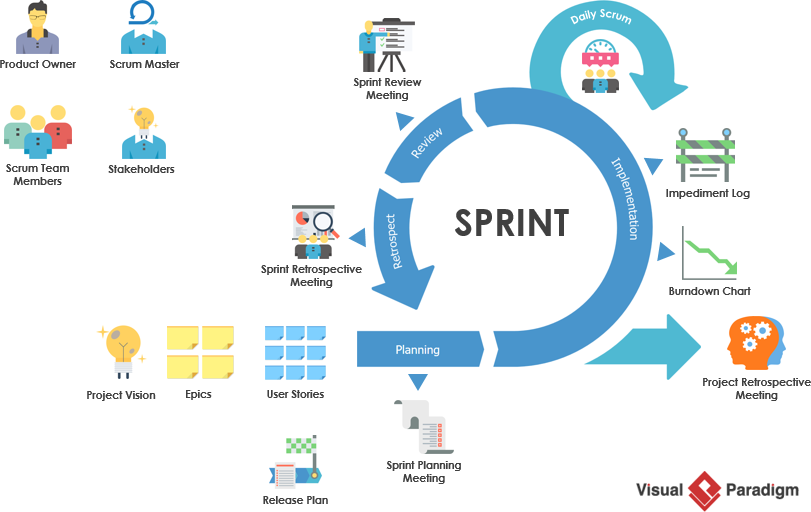
The Scrum Framework
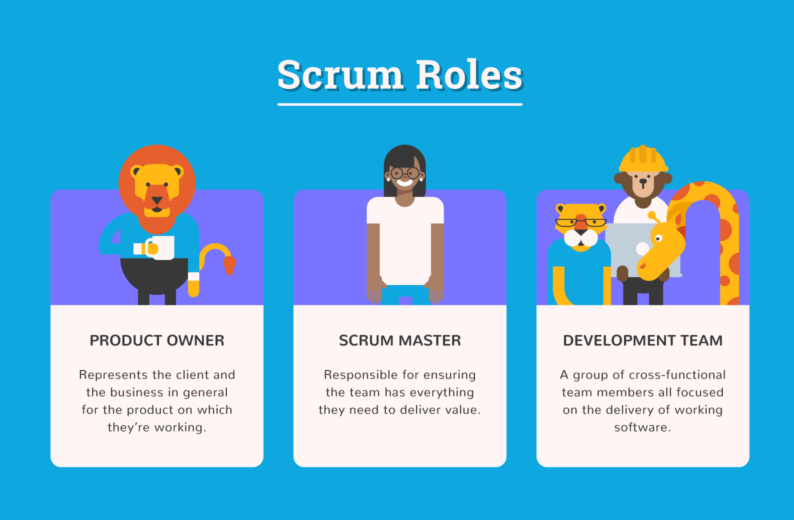
- Product Owner: He is a mediator and a Servant Leader who promotes and requests self-organization from the production team.
- Scrum Master: Enables close collaboration between the Product Owner and the development team and across all functions. He tackles structural problems and defiance to scrum activities.
- Development Team: A team of specialists responsible for research, planning, code writing, testing, and technical cooperation on the basis of user stories generated by the Product Owner.
What Are The 3 Artifacts Of Scrum?
Scrum artifacts provide crucial details that the Scrum team requires to be mindful of during product creation.
1. Product Backlog
The product backlog lists all the characteristics, functions, and specifications that must be rendered for the project. It is prone to adjustment either to represent business needs or industry patterns.
2. Sprint backlog
Sprint backlogs include a list of user stories that could be used in the next sprint. They detail the improvements that are to be made and the intended result.
User stories are structured like this: “As a [blank] I want to [blank] so that I can [blank].”
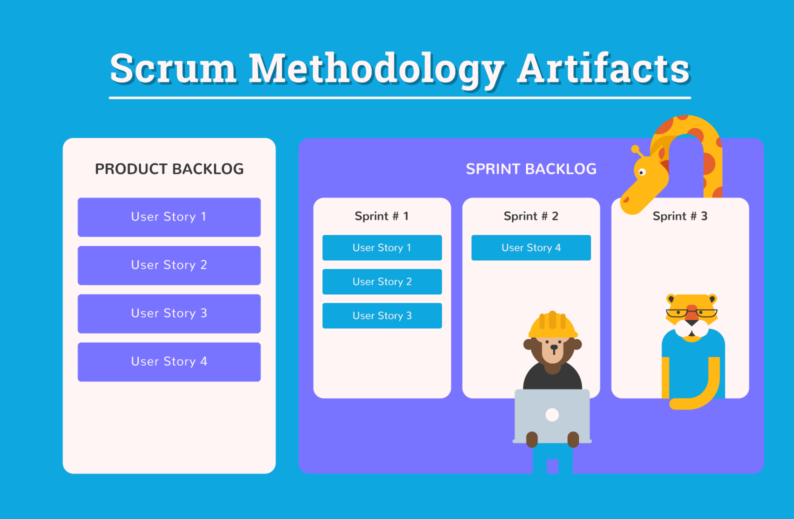
3. Burn-down chart
The Burndown Map is a visual illustration of the work left to be completed versus time. It is helpful to predict when all the work will be done.
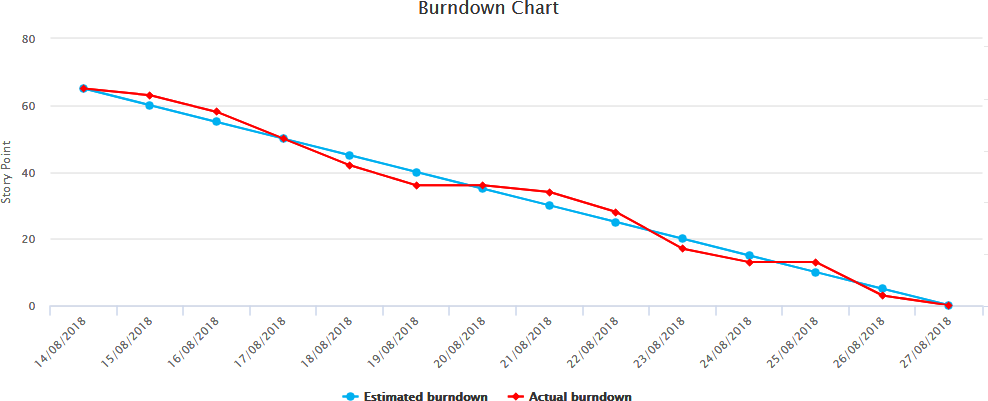
Scrum Meetings (a.k.a. Scrum Ceremonies)
Certain forms of Scrum meetings will occur in the production phase at particular times. Those are also recognized as Scrum Ceremonies.
- Sprint Planning: The product is introduced at this meeting and everyone is invited to express their concerns and views.
- Daily Scrum Meeting: The goal of this meeting is to debrief the team and to draw up a regular growth action schedule, as well as address all the obstacles and concerns.
- Sprint Review: Held at the end, the sprint review is a check-up of the operating product established during the sprint.
- Sprint Retrospective: The Sprint Retrospective is an end-of-life meeting to evaluate how the team performed through the sprint.
The Pros and Cons of The Scrum Approach
Scrum is a fine-tuned approach that includes special properties and ceremonies for each stage of the process. The benefits include:
- Increased transparency and project visibility
- Accountability across teams
- Additional room for changes
- Savings in cost
Alternatively, there are certain pitfalls of such a short, gradual project management method. These drawbacks include the following:
- Scope creep
- Large teams are hard to manage
- The team requires experience and commitment
- Scrum Master must be extremely knowledgeable
- Undefined tasks can lead to inaccuracies
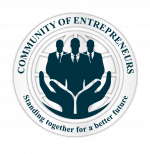
Leave A Comment?